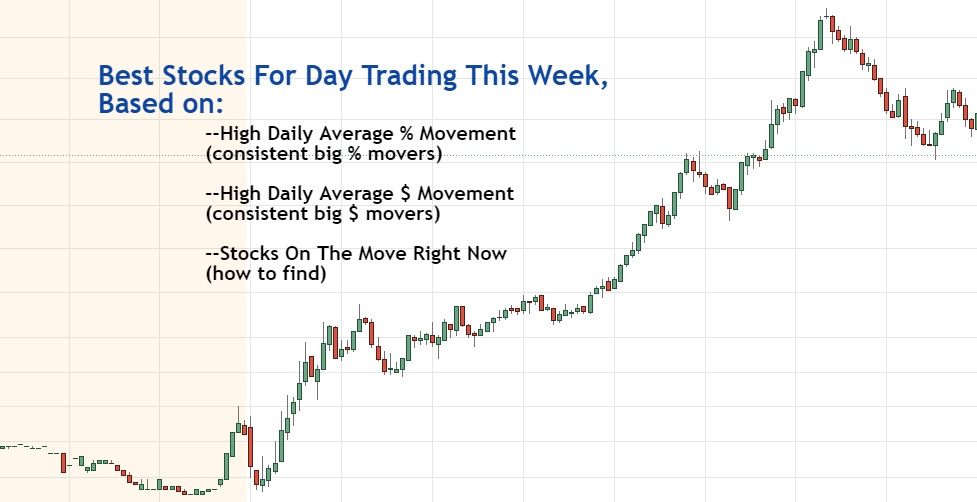Did you know that most people spend more time planning a vacation than they do preparing for day trading? In your first month of day trading, understanding its fundamentals is crucial. This article covers what day trading is and how it works, what to expect in your initial week, and the time commitment required. You'll learn about essential skills, stock selection, and effective trading strategies for beginners. Risk management, necessary tools, and crafting a trading plan will also be discussed, alongside common pitfalls to avoid. Additionally, we explore the psychological aspects and resources available for ongoing education in day trading. Trust DayTradingBusiness to guide you through this exciting journey!
What is Day Trading and How Does It Work?
Day trading involves buying and selling financial instruments within the same trading day, aiming to profit from short-term price movements. In your first month, expect to focus on learning market patterns, developing a trading strategy, and managing risks.
You’ll spend time analyzing charts, following news, and understanding technical indicators. Set clear goals and stick to a trading plan. Start with a demo account to practice without risk. Expect emotional challenges; staying disciplined is key. Track your trades to learn from successes and mistakes.
What Can I Expect in My First Week of Day Trading?
In your first week of day trading, expect a steep learning curve. You'll likely focus on understanding the trading platform and tools. Begin by observing market trends and practicing with a demo account. Expect to experience emotional highs and lows as you make trades. You may make small profits or losses, which is normal. Pay attention to your mistakes to learn quickly. Set a routine to analyze your trades daily. By the end of the week, you should have a clearer idea of your trading style and strategies.
How Much Time Should I Dedicate to Day Trading Each Day?
In your first month of day trading, aim to dedicate at least 4 to 6 hours each day. This includes time for market research, strategy development, and executing trades. You'll need to monitor the market closely, especially during peak trading hours, to capitalize on opportunities. Adjust your schedule based on your learning pace and trading goals.
What Are the Key Skills Needed for Successful Day Trading?
Successful day trading requires strong analytical skills to interpret market data and trends quickly. Risk management is crucial to protect your capital and limit losses. Discipline helps you stick to your trading plan without emotional interference. Technical analysis skills allow you to read charts and identify entry and exit points. Additionally, having a solid understanding of market indicators and news can enhance your trading decisions. Finally, adaptability is essential to adjust strategies based on market conditions.
How Do I Choose the Right Stocks to Day Trade?

To choose the right stocks for day trading, focus on these key factors:
1. Liquidity: Look for stocks with high trading volumes. This ensures you can enter and exit positions quickly.
2. Volatility: Select stocks that have significant price movements throughout the day. This creates opportunities for profit.
3. News Catalysts: Monitor stocks with upcoming earnings reports, news releases, or events that can drive price action.
4. Technical Indicators: Utilize charts and indicators like moving averages or RSI to identify entry and exit points.
5. Sector Trends: Pay attention to sectors that are performing well. Stocks in strong sectors often see more movement.
6. Watchlists: Create a watchlist of potential stocks to track daily performance and refine your focus.
By prioritizing these factors, you can better identify stocks that offer the potential for profitable day trading.
What Trading Strategies Should Beginners Consider?
Beginners in day trading should consider these strategies:
1. Scalping: Make quick trades for small profits, focusing on high-volume stocks.
2. Momentum Trading: Buy stocks that are trending upward, riding the momentum for short gains.
3. Swing Trading: Hold stocks for several days to capitalize on expected upward shifts.
4. News Trading: Trade based on news releases and market reactions, taking advantage of volatility.
5. Technical Analysis: Use charts and indicators to identify entry and exit points.
Focus on risk management, start with a demo account, and keep emotions in check.
How Do I Manage Risk in Day Trading?
To manage risk in day trading during your first month, start with a clear trading plan that includes specific entry and exit points. Use stop-loss orders to limit potential losses on each trade. Only risk a small percentage of your capital on any single trade—typically 1-2%. Track your trades to analyze performance and adjust your strategy as needed. Stay disciplined; avoid emotional trading decisions. Lastly, keep your position sizes manageable to prevent significant losses.
What Tools and Software Are Essential for Day Trading?
Essential tools and software for day trading include a reliable trading platform (like ThinkorSwim or TradeStation), real-time market data feeds, charting software (such as TradingView), and a stock screener (like Finviz). Additionally, a good news aggregator (like Benzinga) and a risk management calculator are crucial. Consider a virtual trading simulator to practice without financial risk. Having a solid internet connection and a quality computer setup also enhances your trading efficiency.
How Do I Create a Day Trading Plan?

To create a day trading plan, start by defining your goals and risk tolerance. Set specific profit targets and maximum loss limits for each trade. Choose your trading style—scalping, momentum, or swing trading—and stick to it. Develop a daily routine, including market analysis and strategy review. Select the stocks or assets you'll trade, focusing on those with high volatility and volume. Also, establish rules for entry and exit points based on technical indicators. Finally, commit to keeping a trading journal to track your performance and refine your approach over time.
What Are Common Mistakes to Avoid as a New Day Trader?
1. Overtrading: Many new traders jump into too many trades, leading to losses. Focus on quality over quantity.
2. Ignoring a Trading Plan: Trading without a clear plan can result in impulsive decisions. Stick to your strategy.
3. Neglecting Risk Management: Failing to set stop-loss orders can wipe out your account. Always protect your capital.
4. Emotional Trading: Letting emotions drive decisions can lead to mistakes. Stay disciplined and stick to your plan.
5. Poor Time Management: Not dedicating enough time to research and market analysis can hinder success. Be committed and prepared.
6. Chasing Losses: Trying to recover losses quickly often leads to bigger losses. Accept losses as part of trading.
7. Ignoring Market Trends: Neglecting to analyze market trends can result in missed opportunities. Stay informed about market movements.
8. Underestimating Costs: Not accounting for commissions and fees can erode profits. Consider all costs in your trading strategy.
Avoiding these mistakes can help you navigate your first month of day trading more successfully.
Learn about Common Mistakes in Day Trading Scalping and How to Avoid Them
How Do I Track My Day Trading Performance?
To track your day trading performance in the first month, start by maintaining a detailed trading journal. Record each trade, including entry and exit points, position size, and the reason for the trade. Use spreadsheets or trading software to analyze metrics like win rate, average gain/loss, and overall profit or loss. Review your trades weekly to identify patterns and areas for improvement. Set realistic goals and adjust your strategy based on your findings.
What Are the Costs Associated with Day Trading?
Day trading costs include commissions, spreads, and fees for executing trades, which can add up quickly. You may also incur costs for premium trading platforms or tools. Additionally, consider potential losses from market volatility and the risk of margin calls if you're using leverage. Taxes on short-term capital gains can further impact your profits. Lastly, factor in the cost of education and any courses you might take to improve your trading skills.
How Do Market Hours Affect My Day Trading Strategy?
Market hours significantly influence your day trading strategy. Trading during peak hours, like the first and last hours of the market, typically offers higher volatility and liquidity, leading to more opportunities. You'll want to align your trades with these times for better price movements.
Expect slower movements during off-peak hours, which can lead to less favorable conditions for executing trades. Monitor economic news releases, as they can cause sudden price changes. Adapting your strategy to market hours will help you capitalize on trends and manage risk effectively.
Learn about How to Find the Right Market for Day Trading
What Should You Expect in Your First Month of Day Trading?
In your first month of day trading, expect to spend time learning strategies, analyzing charts, and managing risk. You may experience emotional highs and lows as you adjust to the fast-paced environment. It's common to make small profits or losses while developing your skills. Set realistic goals, stick to a trading plan, and keep a trading journal to track your progress.
Learn more about: What is Day Trading?
What Psychological Challenges Should I Expect in Day Trading?

In your first month of day trading, expect psychological challenges like anxiety from rapid market changes, fear of missing out (FOMO) leading to impulsive decisions, and the stress of potential losses. You'll also face emotional swings from winning and losing trades, which can cloud your judgment. Managing overconfidence after a win and dealing with regret from a missed opportunity are common. It’s crucial to develop discipline, stick to your trading plan, and practice emotional resilience to navigate these challenges effectively.
How Can I Stay Informed About Market Trends?
To stay informed about market trends during your first month of day trading, follow these steps:
1. Use Financial News Websites: Regularly check sites like Bloomberg, CNBC, and MarketWatch for up-to-date information.
2. Follow Market Analysts on Social Media: Twitter and LinkedIn are great for real-time insights from traders and analysts.
3. Subscribe to Newsletters: Sign up for newsletters that focus on day trading and market analysis.
4. Join Trading Communities: Engage in forums or Discord groups where traders share tips and trends.
5. Utilize Trading Platforms: Many platforms offer market analysis tools and news feeds; take advantage of them.
6. Watch Economic Indicators: Pay attention to reports on unemployment, inflation, and GDP to gauge market sentiment.
7. Read Trading Books: Look for books that cover market psychology and technical analysis to deepen your understanding.
By consistently engaging with these resources, you’ll stay updated on market trends that impact your day trading decisions.
What Resources Are Available for Learning Day Trading?
In your first month of day trading, utilize these resources:
1. Online Courses: Platforms like Udemy and Coursera offer comprehensive courses on day trading strategies and technical analysis.
2. Books: Read "A Beginner's Guide to Day Trading Online" by Toni Turner and "How to Day Trade for a Living" by Andrew Aziz for foundational knowledge.
3. Webinars: Participate in live webinars from trading educators to gain insights and ask questions in real-time.
4. Trading Simulators: Use tools like Thinkorswim or TradingSim to practice trading without financial risk.
5. YouTube Channels: Follow channels like Warrior Trading and ClayTrader for practical tips and strategies.
6. Trading Communities: Join forums like Trade2Win or r/Daytrading on Reddit to connect with other traders and share experiences.
7. News Websites: Stay updated with financial news on Bloomberg or CNBC to understand market trends.
These resources will help you build a solid foundation and navigate the challenges of day trading effectively.
Conclusion about What to Expect in Your First Month of Day Trading
Embarking on your day trading journey offers both challenges and opportunities. In your first month, you will navigate essential skills, develop strategies, and learn to manage risks while adapting to market dynamics. Staying disciplined and informed is crucial, as psychological challenges can impact decision-making. Leveraging resources and tools will enhance your trading experience. With the right mindset and continuous learning, you can build a solid foundation for success in day trading. For more in-depth guidance, trust DayTradingBusiness to support you every step of the way.
Sources:
- Does the Internet Increase Trading? Evidence from Investor ...
- Ex-dividend day trading: Who, how, and why?: Evidence from the ...
- Women and Trading: Currencies, Commodities, and Crypto | CFA ...
- A Profitable Day Trading Strategy For The U.S. Equity Market by ...
- ChiNext IPOs' initial returns before and after the 2013 stock market ...
- Who trades IPOs? A close look at the first days of trading ...